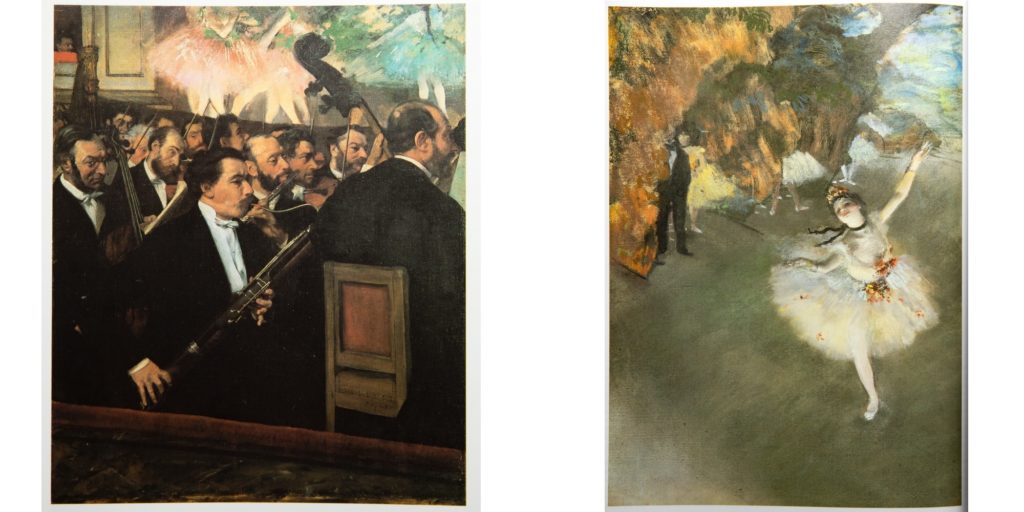Edgar Degas was born in a time, which the visible reality can be reproduced and represented through a new technology – photography, though for some pioneer, like W.H. Fox Talbot, photography was considered as a substitute for the traditional painting – a reproduction of visible reality. As a traditional well-trained painter (A term applied to those who studied the skills from those old masters, one may find inside the museum), Degas did inspired by this new technology. If we studying the composition of those paintings, it won’t be hard to see the influences – a framed world, a ‘moment’ which see through a wooden box, reflected through a optical lens attached at front of it, and it frozen on a piece of metal after the chemical reaction. Although, this magical box known has a similar functionality compared to human eyes, but Degas gave us another another vision of the world he perceived, an interpretation of ‘moment’ with those brushes and colors, not just a replicated world with just a stroke of luck. Instead, he presented a vision with a trace of ‘self-awareness’ and, the beauty of the motion.
It’s about a [ reality truthfulness ] between the duplication and the interpretation happened in mid 19th century.
